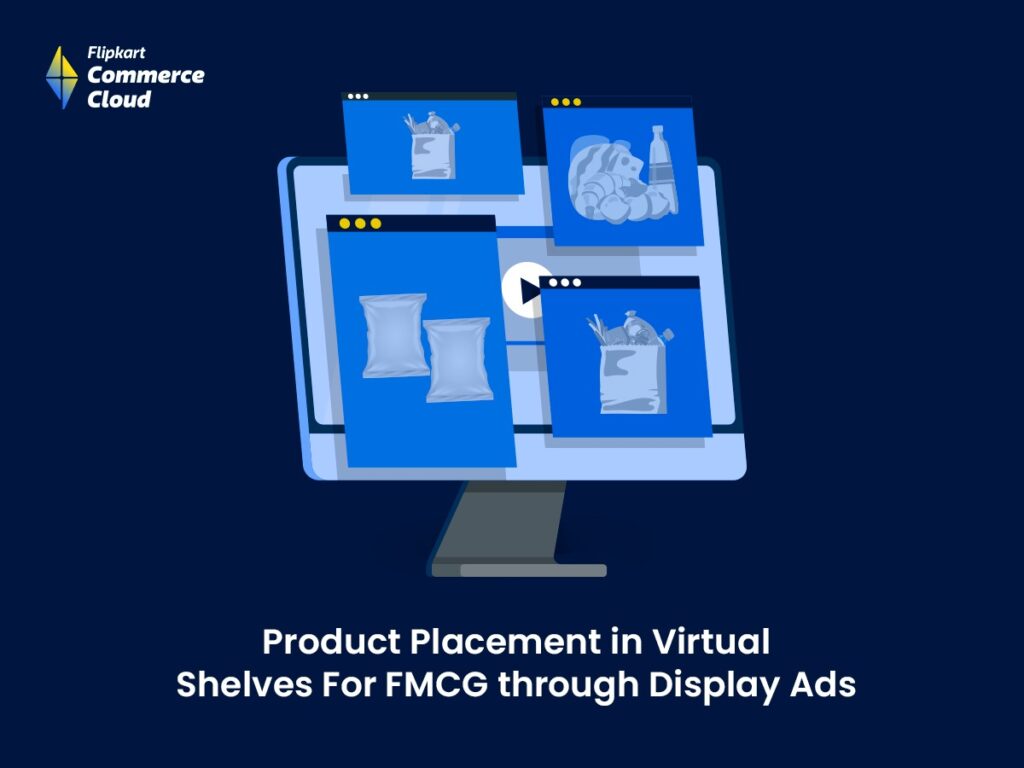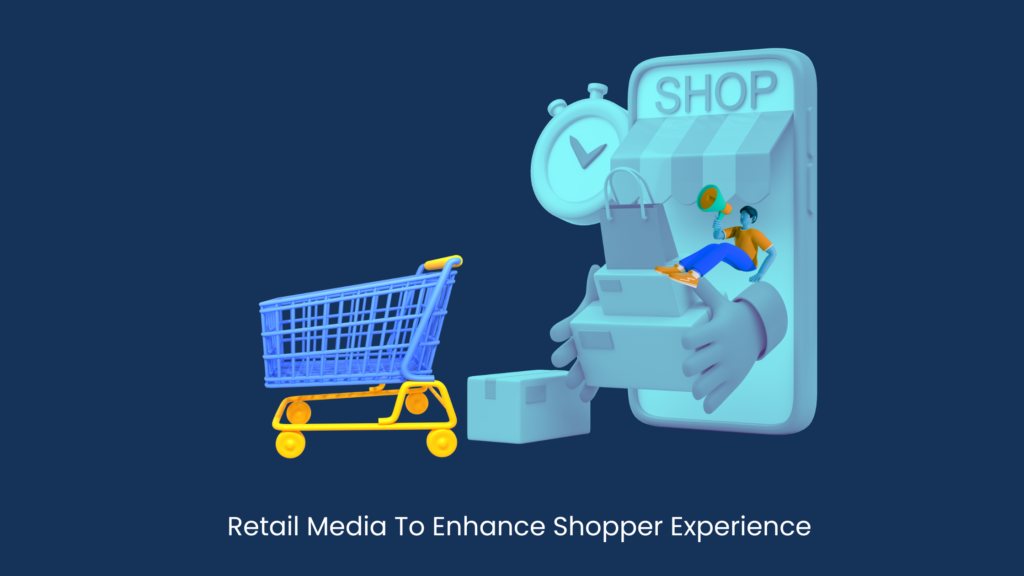In the modern digital world, the consumer space is represented less by brick-and-mortar stores and increasingly more by their virtual counterparts. In 2021 alone, India’s FMCG market amounted to a staggering $68 billion and is only expected to grow in subsequent years. This is indicative of the fact that FMCG sales are witnessing massive overhauls, with e-commerce slowly but surely becoming the preferred choice for consumers.
In such a scenario, it is only natural that brands and retailers are looking to increase their presence in the digital space. And an effective way of doing so is through product placement on virtual shelves.
As physical stores increasingly convey fewer queues in the new normal, product placement on virtual shelves has become a key marketing tool to boost FMCG sales.

What Makes Online Shelf Space Crucial For FMCG Brands? How can Display Ads help?
While shoppers tend to browse through physical store shelves and make impulse purchases, they are more likely to search for specific products online. In other words, the latter provides a more conducive environment for brands to showcase their products and influence buying decisions.
By ensuring that their products are prominently displayed on digital platforms, brands can ensure that they are the first ones consumers see when searching for a particular product.
Key benefits of product placement on online shelves for FMCG brands are:
Better Monitoring: In traditional shelves, it is often challenging for organizations to monitor product sales and understand consumer behavior once the product reaches the shelves. However, online shelves provide brands with access to real-time data that can help them track product performance and make necessary changes to improve sales.
Increased Visibility: Online shelf space allows brands to increase their visibility and reach out to a larger audience at the time when they are most likely to purchase a product. With strategic product placement that goes beyond just the website, brands can ensure that consumers see their products at every touchpoint of the buyer journey.
Improved Brand Recall: When consumers see your brand across multiple digital channels owing to an omnichannel strategy, they are more likely to remember and recall it when they finally make a purchase. This is especially beneficial for new and upcoming brands that are looking to establish their presence in the market.
Cater to Customer Choices: By understanding consumer behavior and preferences, brands can place their products on online shelves that cater to their target audience. This gives them a better chance of making a sale and helps build a loyal customer base in the long run.
Increased Engagement: Online shelves allow brands to interact with consumers and engage with them on a personal level. By leveraging key consumer trends and data, brands can learn more about their target audience and create a better user experience.

Using Digital Retail Media & Display AdsTo Maximize Brand Exposure
Digital retail media is one of the most effective ways to ensure that your product has a presence on online shelves. It helps you reach out to consumers at key touchpoints in their purchase journey and leave a lasting impression.
For example, a display ad on a shopping website or social media platform can help you reach out to consumers who are actively looking for products like yours. Similarly, an influencer marketing campaign can help you connect with consumers who might be interested in your product but are not actively searching for it.
Digital retail media is an effective pathway to connect with consumers at key stages in their purchase journey and create a lasting impression.
When using digital retail media, it is important to keep the following in mind:
- Identify your target audience: Who are you trying to reach with your product?
- Define your objectives: What do you want to achieve with your digital retail campaign?
- Consider the touchpoints: What are the best ways to reach your target audience at each stage of their purchase journey?
- Create a budget: How much are you willing to spend on your digital retail campaign?
- Measure your success: How will you know if your digital retail campaign is successful?
By keeping the above in mind, you can maximize your brand exposure and achieve your objectives.
Successful Digital Retail Media Campaigns With Display Ads
There is no denying that attention is the end game in the ever-competitive world of online retail. The brands that win are the ones that manage to cut through the noise and get their products seen by consumers.
While there is no silver bullet for success, there are some best practices that all successful digital retail media campaigns have in common:
- Product Placement: Just like physical stores, online retailers also have limited space. The brands that can get their products in the most visible places are the ones that are more likely to be seen by consumers. It matters where you show up, as digital shelve space is typically limited, with multiple products vying for attention.
- Make It Count: Giving shoppers useful, befitting information about relevant products at the right time goes a long way. Creating a strong value proposition that speaks to the needs of your target audience is critical to success. For instance, using Image Extensions and Product Listing Ads can effectively showcase what searchers are looking for.
- Seller Marketing: Getting the word out about your product is important, but it’s also important to ensure that you are seen as a reputable seller. Including seller ratings, customer reviews, and other social proof elements in your digital retail media campaigns can help build trust and credibility with potential buyers.
- Think Like a Shopper: Always put yourself in the shopper’s shoes. What would they be interested in? What kind of information would they find useful? By thinking like a shopper, you can create more effective digital retail media campaigns that are more likely to resonate with your target audience.
- Leverage Ad Remarketing: Ad remarketing is an effective way to keep your brand top of mind with potential shoppers. By targeting consumers who have already shown an interest in your product, you can increase their likelihood of purchasing.
- Pay Attention To Digital Packaging: Just like physical products, digital products need to be well-packaged to stand out. Using high-quality product images is akin to having an amazing physical product display. Ensuring that your products are well-lit, in focus, and show all the important details that shoppers need to know can make a big difference in how well your products are perceived.

Conclusion
Digital retail is not about mapping offline sales to online platforms. Online retail is a different beast with its own rules, opportunities, and challenges. To succeed, it’s important to understand the nuances of digital retail and create campaigns specifically designed for online shoppers.